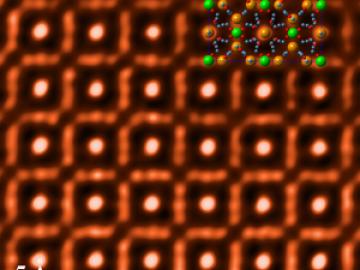
Filter News
Area of Research
- (-) Computational Engineering (5)
- (-) Materials (433)
- (-) Neutron Data Analysis and Visualization (4)
- (-) Sensors and Controls (5)
- Advanced Manufacturing (34)
- Biological Systems (18)
- Biology and Environment (177)
- Biology and Soft Matter (5)
- Building Technologies (12)
- Chemical and Engineering Materials (4)
- Chemistry and Physics at Interfaces (11)
- Clean Energy (522)
- Climate and Environmental Systems (14)
- Computational Biology (6)
- Computational Chemistry (5)
- Computer Science (19)
- Data (1)
- Earth Sciences (1)
- Electricity and Smart Grid (3)
- Energy Frontier Research Centers (14)
- Energy Sciences (5)
- Fossil Energy (3)
- Fuel Cycle Science and Technology (3)
- Functional Materials for Energy (16)
- Fusion and Fission (54)
- Fusion Energy (17)
- Geographic Information Science and Technology (3)
- Isotope Development and Production (3)
- Isotopes (35)
- Materials Characterization (2)
- Materials for Computing (36)
- Materials Synthesis from Atoms to Systems (13)
- Materials Under Extremes (12)
- Mathematics (1)
- National Security (79)
- Neutron Science (190)
- Nuclear Science and Technology (74)
- Nuclear Systems Modeling, Simulation and Validation (3)
- Nuclear Systems Technology (1)
- Quantum Condensed Matter (4)
- Quantum information Science (9)
- Reactor Technology (1)
- Renewable Energy (4)
- Supercomputing (311)
- Transportation Systems (11)
News Type
News Topics
- 3-D Printing/Advanced Manufacturing (23)
- Advanced Reactors (4)
- Artificial Intelligence (10)
- Big Data (3)
- Bioenergy (11)
- Biology (4)
- Biomedical (8)
- Buildings (5)
- Chemical Sciences (32)
- Clean Water (4)
- Climate Change (6)
- Composites (9)
- Computer Science (20)
- Coronavirus (4)
- Critical Materials (13)
- Cybersecurity (4)
- Decarbonization (7)
- Energy Storage (34)
- Environment (16)
- Exascale Computing (2)
- Frontier (3)
- Fusion (7)
- Grid (6)
- High-Performance Computing (5)
- Irradiation (1)
- Isotopes (13)
- ITER (1)
- Machine Learning (6)
- Materials (73)
- Materials Science (78)
- Mathematics (2)
- Microscopy (27)
- Molten Salt (3)
- Nanotechnology (39)
- National Security (3)
- Net Zero (1)
- Neutron Science (33)
- Nuclear Energy (16)
- Partnerships (11)
- Physics (29)
- Polymers (17)
- Quantum Computing (3)
- Quantum Science (11)
- Renewable Energy (1)
- Security (3)
- Simulation (1)
- Space Exploration (2)
- Summit (3)
- Sustainable Energy (13)
- Transformational Challenge Reactor (3)
- Transportation (14)
Media Contacts

Andrew Stack, a geochemist at the Department of Energy’s Oak Ridge National Laboratory, advances understanding of the dynamics of minerals underground.


Scientists who bridge disciplines often take research in new directions. Andrew Stack of the Department of Energy’s Oak Ridge National Laboratory calls on his expertise in geology, chemistry and computing to advance understanding of the dynamics of minerals underground. Working in the Geochemistry a...



Scientists at the Department of Energy’s Oak Ridge National Laboratory have made the first direct observations of a one-dimensional boundary separating two different, atom-thin materials, enabling studies of long-theorized phenomena at these interfaces. Theorists h...

For more than 50 years, scientists have debated what turns particular oxide insulators, in which electrons barely move, into metals, in which electrons flow freely.





